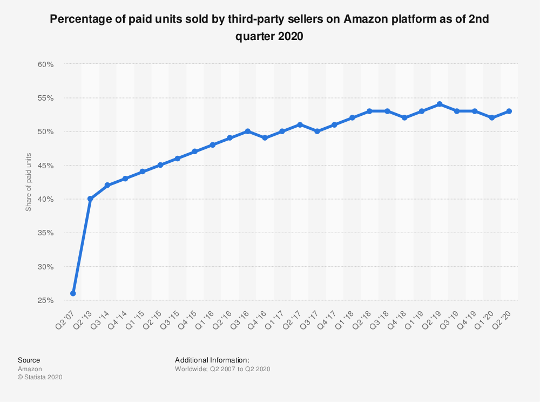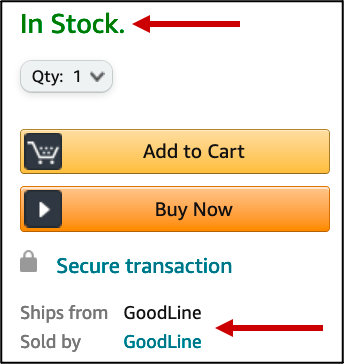Categories: Customer Service
By Mark Tomalonis
Principal, WarehouseTWO, LLC
 Does your company have a fully transactional B2B e-commerce website, one at which a new visitor can buy something with a credit card? If so, congratulations. That’s quite a technical feat.
Does your company have a fully transactional B2B e-commerce website, one at which a new visitor can buy something with a credit card? If so, congratulations. That’s quite a technical feat.
You probably invested heavily in creation of rich content for each item offered for sale at your website, including:
Chances are that you have included in your on-line product catalog EVERYTHING. Every size, every color, every configuration, every option. Thus, your on-line catalog includes thousands of items that you have never sold before and that you do not have in stock. That’s a problem…
 Sure, on-line customers like access to the rich content at your website. But what they want most is for you to ship their order immediately. In other words, B2B customers want everything and they want it now. “On backorder” and “typical lead time: 20 days” are unacceptable messages on your website.
Sure, on-line customers like access to the rich content at your website. But what they want most is for you to ship their order immediately. In other words, B2B customers want everything and they want it now. “On backorder” and “typical lead time: 20 days” are unacceptable messages on your website.
How often do you see those kinds of messages at Amazon.com? In my experience, rarely.
Whether or not Amazon.com is a direct competitor of your company, what should concern you more is how Amazon.com has changed all B2B customers’ expectations. Amazon.com has convinced all B2B customers that everything for sale at your company’s e-commerce website should be available for immediate shipment. How can you meet this expectation without dramatically increasing your investment in inventory? Do what Amazon.com does.
Yes, Amazon.com can ship pretty much anything from stock. But Amazon.com does not own all of that inventory. In fact, Amazon.com owns less than 50% of what it sells. Who owns all of that inventory? 3rd-party sellers. Amazon.com leverages these other companies’ inventories via the practice of “inventory-pooling”. The chart below inllustrates how third-party sellers' inventories contribute to more than half of all sales at the Amazon.com website.

 See this phenomenon for yourself. Perform a Google search on P/N “10-10-10 JBZ-SS”. The graphic to the right shows the availability of this item as displayed at the websites of the first five listings in the Google search result.
See this phenomenon for yourself. Perform a Google search on P/N “10-10-10 JBZ-SS”. The graphic to the right shows the availability of this item as displayed at the websites of the first five listings in the Google search result.
Now search for P/N “10-10-10 JBZ-SS” at Amazon.com. The graphic below and to the right shows the details on availability at that website. (I added the two red arrows for emphasis.)
Amazon.com does not own this item, “GoodLine” owns it. But Amazon.com is happy to sell it to you.
 You too can leverage other companies’ inventories, via “inventory-pooling”. By offering more inventory at your e-commerce website, you can turn more site visits into orders. Without increasing your own inventory levels.
You too can leverage other companies’ inventories, via “inventory-pooling”. By offering more inventory at your e-commerce website, you can turn more site visits into orders. Without increasing your own inventory levels.
For industrial wholesaler-distributors selling via a B2B transactional website, "other companies" are easily identifiable. They are peer wholesaler-distributors who sell the same product lines that your company sells. They may have been competitors last week, but today they can be great sources for out-of-stock items for sale at your website.
The process of implementing “inventory-pooling” has four steps:
Step #1: Identify potential “inventory-pooling” partners.
Partners typically are peer distributors who sell the same brands of products that you sell and may have stock on items that your company does not stock. The best path to this group of partners is through the manufacturers that you and they have in common. Alternative paths include buying groups and trade associations.
Step #2: Create a shared database “in the cloud”.
Deploy a software tool that enables you and your partners to upload inventory data to “the cloud” and then export that data and import it into your company’s ERP software system. (This is exactly what WarehouseTWO does.)
Step #3: Display other distributors' inventory availability at your website.
This is the one simple feature at your e-commerce website that can turn more site visits into orders. How you execute this bit of wizardry is between your website developer and your ERP system. Clearly indicate that there is available inventory, even if you do not own it currently. Example:
If you have your own inventory of the selected item, distinguish between that inventory and inventory available from partners. Example:
Of course, do not indicate at your website who these partners are. It is your responsibility to buy from these partners and then resell to your customer. The source for the items should remain invisible to your B2B customers.
Step #4: Create a robust order management processes.
Establish a method to identify an on-line order for quantities displayed at your website but available from an “inventory-pooling” distributor partner, and establish a robust process to purchase that quantity from that distributor and get it shipped out to the on-line customer…in one day. (Consider a process that has the partner drop-ship the product to your on-line customer but include your packing slip with that shipment.)
Contact me to learn more about how to get started with “inventory-pooling” with other distributors.
About the Author After a successful career in sales and operations management in the wholesale-distribution industry, Mark Tomalonis is now principal of WarehouseTWO, LLC. He amuses himself by writing articles, such as this one, to help wholesaler-distributors execute their operations better. Mark’s articles and tips are published in WarehouseTWO’s monthly e-newsletters. Click here to subscribe.
After a successful career in sales and operations management in the wholesale-distribution industry, Mark Tomalonis is now principal of WarehouseTWO, LLC. He amuses himself by writing articles, such as this one, to help wholesaler-distributors execute their operations better. Mark’s articles and tips are published in WarehouseTWO’s monthly e-newsletters. Click here to subscribe.
About WarehouseTWO
WarehouseTWO, LLC is an independent “inventory-sharing” service created exclusively for durable goods manufacturers and their authorized distributors, and for any group of durable goods “peer” wholesaler-distributors, such as members of a buying/marketing group or cooperative. To learn how inventory-sharing with WarehouseTWO can help your business, visit the WarehouseTWO website, or email info@warehousetwo.com.